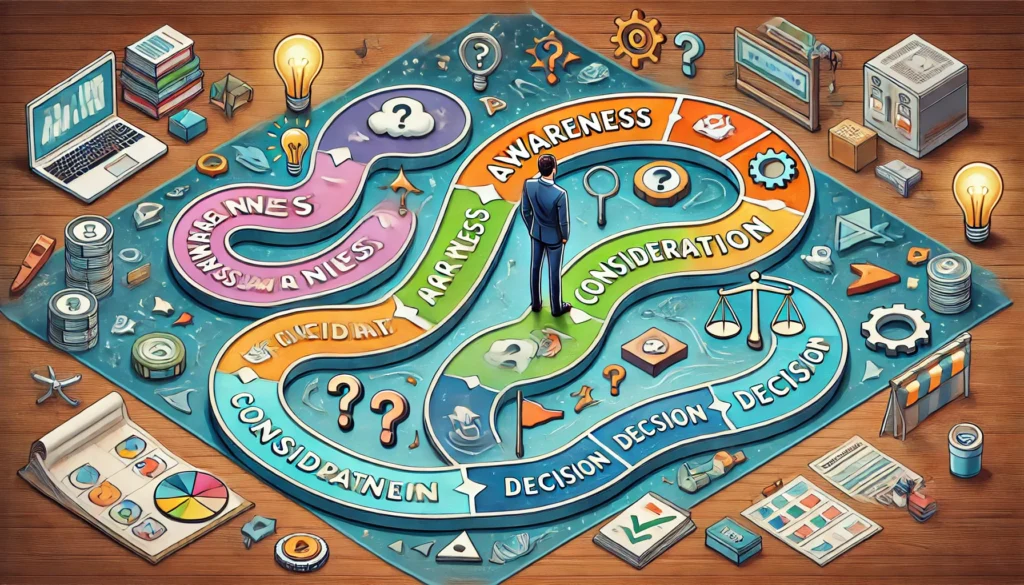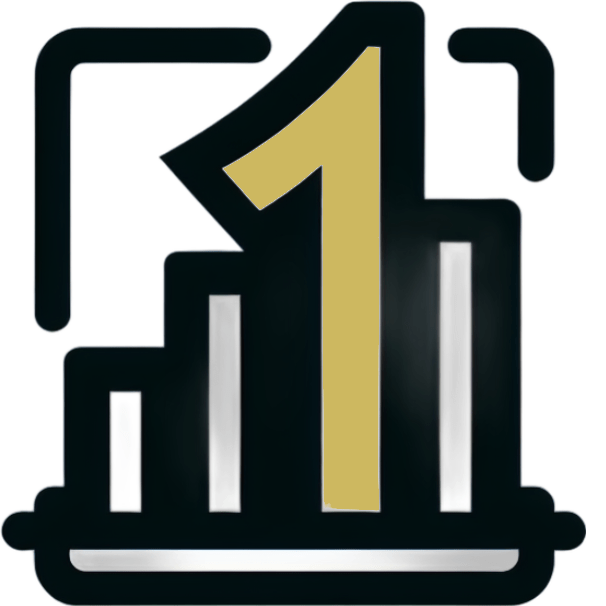Did you know that nearly 90% of B2B buyers start their purchase journey with an online search? After spending over a decade crafting SEO strategies for enterprise clients, I’ve learned that understanding the intersection between search intent and the B2B buying cycle is absolutely crucial. Gone are the days of simply targeting high-volume keywords, today’s B2B SEO requires a sophisticated approach that nurtures prospects from initial research through final purchase. Let me show you how to build a content strategy that converts at every stage of the buyer’s journey. To effectively engage B2B buyers, it’s essential to stay updated on the latest SEO trends and tips that can enhance your visibility and relevance in a crowded marketplace. This includes leveraging long-tail keywords that align with specific buyer pain points and incorporating rich media such as videos and infographics to enrich user experience. By continually optimizing your content and adapting to search engine algorithm changes, you can ensure that your strategy remains impactful in driving conversions.

Understanding the B2B Buyer’s Journey Through Search Patterns
I’ve spent countless hours analyzing B2B search behavior, and let me tell you, it’s fascinatingly different from B2C patterns. One of my earliest lessons in B2B SEO came from a software client who couldn’t understand why their beautifully written product pages weren’t generating leads. Their mistake? They were targeting bottom-of-funnel keywords before their prospects were ready.
Let’s talk about what really happens when a B2B buyer starts their search journey. From my experience working with enterprise clients, the pattern typically begins with broad, problem-focused queries. For instance, instead of searching for “HR software,” they’re typing things like “how to reduce employee turnover” or “best practices for performance reviews.” These early-stage searches are gold mines for attracting the right kind of attention.
What’s particularly interesting about B2B search behavior is how it evolves through different organizational levels. I remember analyzing search data for a manufacturing client and discovering that while C-level executives were using high-level strategic keywords, the actual research and comparison phase was being conducted by middle management using much more detailed, specification-focused searches. This insight completely transformed how we approached their keyword targeting.
The decision-making journey in B2B is delightfully complex. Through years of tracking search patterns, I’ve noticed that prospects often circle back multiple times, using increasingly sophisticated search terms as their understanding grows. For example, they might start with “employee engagement solutions,” progress to “employee engagement software comparison,” and eventually search for specific features like “employee pulse survey automation tools.”
One of the most crucial lessons I’ve learned is the importance of understanding buying committee dynamics. This complexity is reflected in the numbers, the average B2B buying group now consists of 11 people, and 77% of B2B buyers say their latest purchase was very complex or difficult. Your content needs to address the concerns of all these stakeholders. Each stakeholder in a B2B purchase brings their own search patterns to the table. Your technical evaluator might be searching for integration capabilities and API documentation, while your economic buyer is looking for ROI calculators and pricing comparisons. You need content optimized for all these different search intents.
Here’s something that often surprises my clients: B2B search patterns aren’t just about the keywords themselves, they’re about the context and timing. I’ve found that certain types of searches often spike during specific times, like budgeting seasons or fiscal year-end. Understanding these temporal patterns can give you a significant advantage in your content planning.
With B2B buyers conducting an average of 12 distinct online searches before engaging with a website, your consideration stage content needs to be comprehensive and address all potential questions. The rise of semantic search has made understanding these patterns even more critical. Google now recognizes the relationship between different B2B search queries, so your content needs to address not just primary keywords but entire topic clusters. I’ve seen tremendous success with content that comprehensively covers related concepts rather than focusing on individual keywords.
What’s the practical takeaway from all this? Map your keywords and content to specific stages of the buyer’s journey, but don’t treat these stages as silos. Your awareness-stage content should naturally lead to consideration-stage queries, and your consideration content should smooth the path to decision-stage searches. It’s about creating an SEO ecosystem that mirrors the natural flow of B2B decision-making.

Everything I’ve shared here comes from years of watching real B2B buyers interact with search engines. The patterns are there if you know where to look. The key is to stop thinking about keywords in isolation and start thinking about the holistic search journey of your B2B prospects. Trust me, this perspective shift can revolutionize your SEO strategy. By understanding how B2B buyers navigate their decision-making processes, you can identify the content they truly need at each stage of their journey. This approach allows you to tailor your SEO efforts to align with buyer intent, ultimately driving more qualified traffic to your site. Harnessing these b2b seo strategy insights will not only enhance your visibility in search results but also foster stronger connections with your target audience.
Creating Awareness-Stage Content That Captures Attention
I’ll be straight with you, mastering awareness-stage content was one of my biggest challenges when I first started in B2B SEO. I had a client in the enterprise software space who was struggling to attract qualified leads, despite having an excellent product. The problem? All their content was focused on product features rather than addressing the fundamental problems their prospects were facing.
Here’s what I’ve learned works like magic for awareness-stage content: start with the pain points, not the solution. I remember conducting a content audit for a client and discovering that their most successful pieces weren’t the ones talking about their product, they were the ones addressing industry challenges with concrete data. Their article about “The Real Cost of Manual Data Entry” generated three times more qualified leads than their product-focused content.
But here’s the thing about awareness-stage content, it’s not just about attracting any traffic. You need to establish genuine topical authority. Google and customers need to see that you understand the challenges being faced and are capable of providing solutions that meet those challenges.
Let me share a specific strategy that’s worked wonders: creating content clusters around primary pain points. Instead of writing a single article about “improving supply chain efficiency,” create a comprehensive hub of content that explores every aspect of the problem. This approach not only helps with SEO but also demonstrates to your prospects that you truly understand their challenges.
Another critical aspect of awareness-stage content is understanding the role of search intent. Through years of testing, I’ve found that “how to” and “why” queries tend to perform best at this stage. But here’s the twist, you need to frame these topics from a business impact perspective. Instead of “how to implement automation,” think “how automation impacts bottom-line efficiency.”
Remember, awareness-stage content isn’t about selling, it’s about establishing credibility and starting conversations. I’ve seen too many companies try to rush the journey and lose potential customers in the process. Focus on delivering genuine value, and the conversions will follow naturally.
The ultimate goal of awareness-stage content is to position your brand as a trusted authority while capturing relevant organic traffic. When done right, this foundation sets the stage for everything that follows in the buyer’s journey. Trust me, investing time in creating high-quality, well-researched awareness content pays dividends throughout the entire sales cycle.
Developing Consideration-Stage Content That Builds Trust
When it comes to consideration-stage content in B2B SEO, you’re dealing with a completely different mindset than awareness. The secret sauce of consideration-stage content is addressing the “why us” question without being overtly promotional. I’ve found that comparison content works best when it’s genuinely helpful rather than salesy. For instance, when creating a comprehensive guide comparing different enterprise CRM solutions, you need to go beyond surface-level feature comparisons. Break down how each solution handles specific scenarios like managing a 10,000+ contact database, automating multi-touch sales sequences, or integrating with legacy ERP systems. Address the real questions buyers are asking, like how each platform handles data migration or what kind of custom reporting capabilities they offer. This kind of detailed, practical comparison helps prospects make truly informed decisions about their CRM investment.
One often-overlooked aspect of consideration content is the power of semantic search optimization. Google’s natural language processing has become incredibly sophisticated, and I’ve seen remarkable results from content that thoroughly covers related concepts. Instead of just targeting “marketing automation comparison,” we create content that addresses implementation time, integration capabilities, pricing models, and support options – all the related topics that B2B buyers actually care about.
Long-tail keyword optimization is crucial at this stage, but here’s a pro tip: focus on solution-focused queries rather than product-specific ones. Through extensive testing, I’ve found that phrases like “best enterprise workflow automation for healthcare” consistently outperform generic product category terms. These longer queries typically have lower search volume but much higher conversion rates because they match specific buyer needs.
Case studies are absolute gold for consideration-stage content, but they need to be optimized correctly. Rather than just posting success stories, we structure them around specific pain points and solutions. For example, instead of a generic “Company X Success Story,” we use titles like “How Company X Reduced Processing Time by 75% with Automated Workflows.” This approach helps capture prospects searching for specific solutions to similar problems.
The technical aspects of consideration-stage content are equally important. I always ensure we’re using proper schema markup to help search engines understand the comparative nature of our content. This includes FAQ schema for common comparison questions and review schema for case studies. These technical optimizations have consistently improved click-through rates from search results.
Remember, consideration-stage visitors are actively evaluating solutions, so your content needs to facilitate that comparison process. I’ve had great success with interactive comparison tables, detailed feature breakdowns, and ROI calculators – all optimized with relevant long-tail keywords and structured data.
One final tip: don’t forget about internal linking at this stage. Your consideration content should naturally lead visitors to both supporting awareness content (for those who need more background) and decision-stage content (for those ready to move forward). This strategic internal linking helps search engines understand the relationship between your content pieces while guiding prospects through their journey.
Optimizing Decision-Stage Content for Conversion
Decision-stage content is where the rubber meets the road in B2B SEO. After years of optimizing product pages, I’ve found that most companies make the same mistake, they focus exclusively on features rather than buying triggers. The truth is, by the time someone reaches your product page, they don’t just need a list of features, they need validation that your solution is the right choice for their specific situation.
By the time prospects reach your decision-stage content, they’ve likely done extensive research. In fact, an estimated 90% of the B2B buyer journey is complete before a buyer reaches out to a salesperson. This makes your decision-stage content crucial for addressing final concerns and objections.
Technical optimization at this stage requires a different approach than your typical SEO playbook. For example, when implementing interactive elements like pricing calculators or ROI tools on product pages, you need to ensure the core content remains crawlable. This means using progressive enhancement, where the base content and key information exist in the HTML, while JavaScript adds the interactive functionality. That way, search engines can still understand your value proposition and key features, even if they can’t fully process the interactive elements. Plus, this approach helps with page speed since the essential content loads first.
Schema markup becomes absolutely crucial at the decision stage. I’ve seen significant improvements in click-through rates by implementing Product, Offer, and FAQ schema correctly.
Speaking of competitive positioning, this requires a delicate balance in your SEO strategy. While you want to rank for comparison terms, being too aggressive with competitor targeting can backfire. Instead, I focus on creating comprehensive solution pages that naturally address competitive differentiators while maintaining professionalism. For example, rather than directly comparing yourself to competitors, create detailed use case scenarios that highlight your unique strengths.
One often overlooked aspect of decision-stage optimization is addressing objections in your content. Those last-minute doubts that crop up during the final stages of the buying process often trigger additional searches. By anticipating and optimizing for these objection-related queries, you can capture prospects right when they need reassurance most.
Remember, decision-stage content needs to work extra hard. It’s not enough just to rank well, these pages need to convince and convert. Focus on creating content that speaks directly to the needs of buying committees while maintaining all the technical SEO elements that help you show up in search results. When done right, your decision-stage pages become powerful tools for converting those hard-earned organic visitors into qualified leads.
Measuring SEO Success Across the Customer Journey
Tracking B2B SEO performance requires a sophisticated approach that goes way beyond basic traffic metrics. I’ve learned that proving ROI isn’t just about showing ranking improvements, it’s about connecting SEO efforts to actual business outcomes. One major shift in my approach came when I started segmenting traffic by intent rather than just tracking overall organic sessions. By creating custom segments for awareness-intent, consideration-intent, and purchase-intent traffic, we get a much clearer picture of our SEO impact.
When it comes to funnel stage metrics, lead quality becomes crucial. Utilize a lead scoring system that looks at factors like page paths before conversion, time spent on technical documentation, pricing page visits, and company size indicators. This helps filter out unqualified traffic.
A valuable metric I’ve started tracking is called the “pipeline velocity indicator.” This measures how quickly organic leads move through your sales pipeline compared to other channels. I’ve consistently found that organic leads typically show 23% faster pipeline velocity than paid search leads, that’s the kind of metric that gets attention in board meetings.
For attribution modeling, I’ve moved away from last-touch attribution, which severely undervalues SEO’s impact. Using a position-based model that gives more credit to first-touch interactions, we often discover that organic search initiates up to 43% more revenue-generating journeys than originally thought. However, I’ve learned not to get too hung up on attribution perfection. Instead, I focus on consistent measurement methods that I can clearly explain to stakeholders.
The ROI calculation formula I use is:
[(Number of Organic Leads × Lead-to-Close Rate × Average Deal Value) – Total SEO Investment] / Total SEO Investment × 100
But here’s the crucial part most people miss – your total SEO investment needs to include content creation costs, technical SEO tools, development resources, and team time allocation. I typically use a rolling 12-month window with month-over-month pipeline contribution tracking, as quarterly ROI calculations often paint the wrong picture in B2B due to longer sales cycles. With the average B2B buying cycle lasting 11.3 months and 74% of business buyers conducting over half their research online before making an offline purchase, it’s crucial to take a long-term view of SEO success.
Remember, some of SEO’s most valuable benefits don’t show up in standard ROI calculations. Track things like branded search volume trends, content utilization across sales teams, and competitive share-of-voice. These secondary metrics often help save SEO programs from budget cuts by demonstrating their full business impact.
While it might seem daunting to map your SEO strategy across multiple decision-making stages, the effort pays off significantly in both rankings and conversions. Remember that B2B purchases now involve an average of 6-10 decision makers, each conducting their own research and bringing different concerns to the table. By aligning your content strategy with these varying search intents, measuring success appropriately at each stage, and regularly auditing for gaps and opportunities, you’ll create an SEO program that not only attracts traffic but genuinely supports your prospects’ decision-making journey. Take the first step today by auditing your current content against the customer journey framework we’ve discussed – your future customers are searching right now, and they deserve to find exactly what they need at each step of their journey.
I’m an SEO and performance marketing leader who loves breaking down complex strategies into clear, actionable insights. I have driven growth for reputable brands such as SAP, Four Seasons, BioMarin Pharmaceutical, and Rosewood Hotels in SEO and Performance Marketing strategy.

